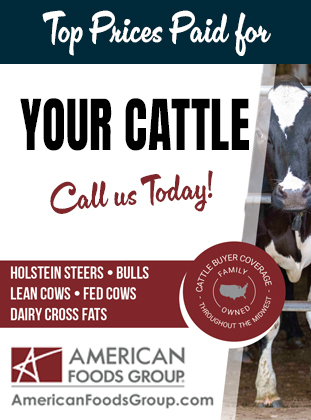Keep yourself and your employees warm with winter workwear basics

By Jaclyn Krymowski
Winter weather brings with it a host of challenges to the dairy farm, for those with four legs as well as two. While it may not be as forefront to your thoughts as say, keeping equipment from freezing and de-icing areas with major hoof traffic, having sufficient workwear and gear for you and your employees will make the long cold months safer and more bearable.
While it is easy to become blind to the importance of functional and effective cold weather wear, that quickly changes when you really need it. On the other side of the coin, companies spend lots of money to get you to spend dollars on items that don’t actually work. Be sure you invest money on the right cold weather gear, items that will withstand the test of time.
Gearing Up for Cold Weather
When selecting gear for the winter and cold conditions, you should always consider comfort, warmth, safety and functionality.
For dairies, there are some Occupational Safety and Health Administration (OSHA) guidelines to help managers make sure employees not only stay safe, but are able to withstand the elements.
“OSHA recommends wearing at least three layers of clothing to ward off the chill. Start with a base layer against skin. Then add an insulating layer in the middle, and a wind and water-resistant outer layer that has a bit of ventilation,” reads the 2023 blog by the Farm Bureau Financial Services Working in Cold Weather: 4 Safety Tips for Farmers and Ranchers.
Most of the essentials that your employees should wear are self explanatory. These are durable, water-resistant outerwear, thick hats, insulated gloves and socks and winter-friendly work boots.
Part of layering up could include a thermal underwear base layer. These could be light through heavy weight depending on the intensity of the weather, but having them well help outerwear do a better job regulating body temperature.
For all articles of clothing, materials matter. Cotton, for example, shouldn’t be worn directly against the skin in cold, wet weather as it will absorb moisture instead of remove it. Wool is a much better option at retaining warmth and wicking away moisture, there are also lots of synthetic options on the market.
Likewise, fit should be considered. Clothing that is too loose or too tight can post a serious risk in the workplace. You also want to be sure that there is ample coverage, especially against wind chill. In addition to full-coverage hats, keep a stock of full face covers and thermal wear.
Beyond clothing, consider how cold weather will affect communal, high-traffic areas such as break rooms and offices. Wet clothing in cold weather can pose a serious health risk, so it’s essential to provide a designated space for drying. Ensure you have a home for heavy winter coats, extra coveralls and other gear. Clearly communicate to employees what types of clothing and gear are allowed to be stored or washed on-farm.
Maintaining Functionality on the Farm
A key component to dressing for cold conditions is also functionality of the gear. Everyone has to be able to safely and efficiently complete their day to day routine tasks
Clothing Fit and Condition
While layering is essential for staying warm, it’s important to keep the fit and condition of clothing in mind. Clothes that are too loose or torn can become an entanglement risk, while overly tight or restrictive clothing can hinder movement, making it dangerous when operating equipment or needing to move quickly in emergencies.
Layering and Outerwear
Clothing selection plays a key role in maintaining safety, and layering is particularly effective in cold weather. Look for affordable, off-brand outerwear options that provide effective warmth without breaking the bank. Although these may not be as durable as more expensive counterparts, they can offer good value and protection from the cold.
Footwear
Boots are essential for cold, wet conditions. Leather boots are great, but during high-moisture seasons, high-quality rubber boots or rubber boot covers are better suited to withstand wetness, salt, and farm chemicals. The main challenge with boots is ensuring they remain dry and provide protection from the cold. Moisture-wicking socks can be extremely helpful, and in extreme conditions, heat packs designed for boots are an excellent supplement.
Headgear and Visibility
Stocking caps are a common choice when temperatures drop. For safety reasons, it’s important to encourage employees to wear bright, fluorescent-colored caps or hats that enhance visibility. Safety vests can also be helpful in low-visibility areas to ensure workers remain visible to others.
Other Gear to Consider
In addition to the basic wardrobe staples, there are several useful additions worth keeping accessible on farm and encouraging your employees to supply for themselves.
Temporary heating packs for gloves and boots can be a good supplement to quality boots and gloves on an as-needed basis. Other tools you might want to have on hand are extra flashlights, emergency supplies (think things like power outages, whiteouts or snowed-in situations) thermal underwear, hoodies and sweatshirts and coats if possible.
Something to consider as the days get shorter and the temperatures reach lower, is adjusting schedules that can address some of the challenges. Additionally, adding more frequent breaks can help reduce the exposure and risks associated with the cold.
In addition to ample clothing, be sure to be as flexible as possible in your winter routines to handle unexpected challenges. Having something as simple as heating in the break room and offering frequent opportunities to take a break, grab a snack and warm up all go a long way to conserving body heat and avoiding seasonal hazards.

